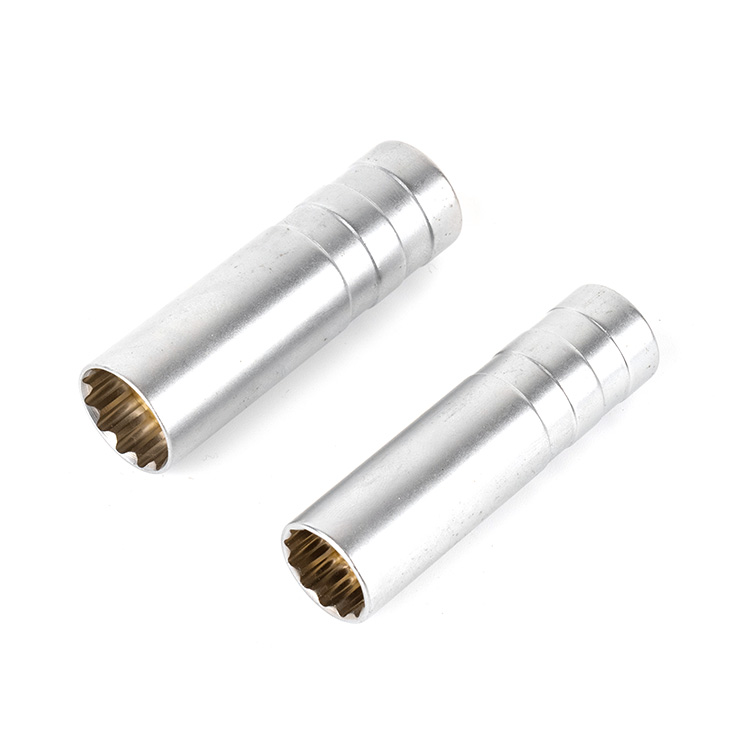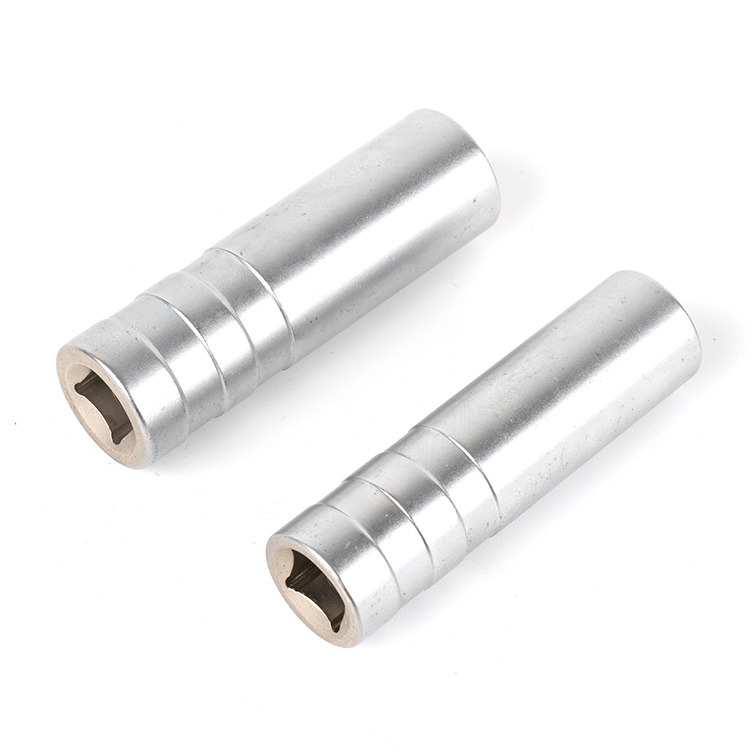How Are 3/8" Magnetic Spark Plug Sockets Redefining Precision and Reliability in Modern Engine Maintenance?
2025-10-10
In the gritty world of automotive repair, where fractions of an inch and split-second errors can mean the difference between a smooth-running engine and costly damage, the 3/8" magnetic spark plug socket has emerged as an unsung hero. This compact tool, designed to safely remove and install spark plugs in gasoline engines, is undergoing a quiet transformation—driven by demands for greater precision, durability, and adaptability in both professional garages and home workshops. Insights from tool manufacturers like Snap-on, Craftsman, and GearWrench, alongside data from market researcher IBISWorld, reveal how this niche component is evolving to meet the needs of a changing automotive landscape.

The Critical Role of a “Small” Tool in Big Repairs
Spark plugs are the heartbeat of internal combustion engines, but their removal is infamously tricky. Traditional sockets often fail to grip the plug securely, leading to slips that scratch cylinder heads, strip threads, or drop plugs into engine wells—errors that can cost mechanics hours of extra labor. Enter the 3/8" magnetic spark plug socket: its integrated magnet secures the plug during extraction and installation, eliminating slippage and reducing the risk of damage.
This utility has kept the tool in high demand, even as electric vehicles (EVs) gain traction. IBISWorld reports that the U.S. automotive repair tools market, which includes spark plug sockets, grew 4.2% in 2023, fueled by a fleet of 280 million gasoline-powered vehicles still on American roads—many over a decade old, requiring frequent maintenance. “EVs are the future, but today’s shops still rely on tools like these to service the 90% of cars that aren’t electric,” notes Mike Roberts, a master mechanic with 25 years of experience in Chicago.
Solving Long-Standing Pain Points with Innovation
While magnetic sockets have been around for decades, recent iterations address persistent flaws. Early models often featured weak magnets that failed to hold heavier plugs or corroded over time, while thin-walled designs risked warping under torque. Modern versions, however, reflect advancements in materials and engineering that have elevated their performance.
Craftsman’s 2024 “V20 Pro” socket, for example, uses a neodymium magnet—50% stronger than traditional ferrite magnets—to securely grip plugs weighing up to 8 ounces, even when covered in oil or carbon buildup. The socket itself is forged from chrome vanadium steel (Cr-V), heat-treated to Rockwell 48-52 hardness, ensuring it withstands the 30-50 ft-lbs of torque required for spark plug installation without deforming. “We tested these sockets on 1,000+ removal cycles with corroded plugs—no magnet loss, no warping,” says Craftsman’s product engineer, Laura Chen.
GearWrench has prioritized versatility, releasing a “Multi-Grip” socket with a reversible design that accommodates both 14mm and 16mm spark plugs—common sizes in engines from Ford F-150s to Honda Civics. “Mechanics hate switching tools mid-job,” explains GearWrench’s R&D lead. “This socket cuts down on time wasted rummaging through toolboxes.”
Market Growth Driven by Professional and DIY Demand
The 3/8" magnetic spark plug socket market is expanding across two key segments:
Professional Garages: High-volume repair shops demand tools that reduce downtime. Snap-on’s “Extreme Duty” line, featuring anti-corrosive nickel plating and laser-etched size markings, has become a staple in dealership service bays. A 2023 survey by Automotive Management Online found that 78% of professional mechanics cite “reliability under heavy use” as their top criterion for spark plug sockets—up from 62% in 2020.
DIY Enthusiasts: The rise of at-home car maintenance, fueled by YouTube tutorials and affordable parts, has boosted demand for consumer-grade sockets. Amazon sales data shows that budget-friendly options like EPAuto’s magnetic socket (priced under $20) now account for 35% of category revenue, as hobbyists seek tools that balance cost with performance.
Addressing the EV Era: Adapting to a Changing Market
While EVs don’t use spark plugs, the tool’s relevance endures in hybrid vehicles (which retain gasoline engines) and the classic car restoration market, where vintage engines still dominate. Manufacturers are leaning into this by expanding compatibility: GearWrench now offers a “Vintage Edition” socket with a deeper well to reach plugs in older engines with recessed cylinder heads, while Snap-on has introduced a non-magnetic variant for mechanics working on aluminum heads, where magnetism could attract metal shavings.
“Skeptics say spark plug sockets will fade with gas engines, but that’s short-sighted,” says Roberts. “There are 50 million classic cars in the U.S. alone, and hybrids will be around for decades. This tool isn’t going anywhere.”
The Future of Precision in Engine Maintenance
Looking ahead, innovation in 3/8" magnetic spark plug sockets will focus on two fronts: enhanced ergonomics and smarter design. Snap-on is prototyping a socket with a rubberized grip that reduces hand fatigue during repetitive jobs, while Craftsman is testing a “SmartMag” version with a built-in torque indicator—an LED light that glows when the plug is tightened to manufacturer specifications, preventing over-tightening.
“In a world where tools are getting fancier, the spark plug socket remains a fundamental,” says Chen of Craftsman. “But that doesn’t mean it can’t evolve. The best tools adapt to the people who use them—and right now, mechanics want more precision, more durability, and less hassle.”
For the millions of gasoline engines still powering roads worldwide, the 3/8" magnetic spark plug socket isn’t just a tool—it’s a guarantee that even the smallest parts of a car can be serviced with the care they deserve. As automotive repair evolves, this unassuming socket is proving that sometimes, the most essential innovations are the ones that make the tough jobs just a little bit easier.




